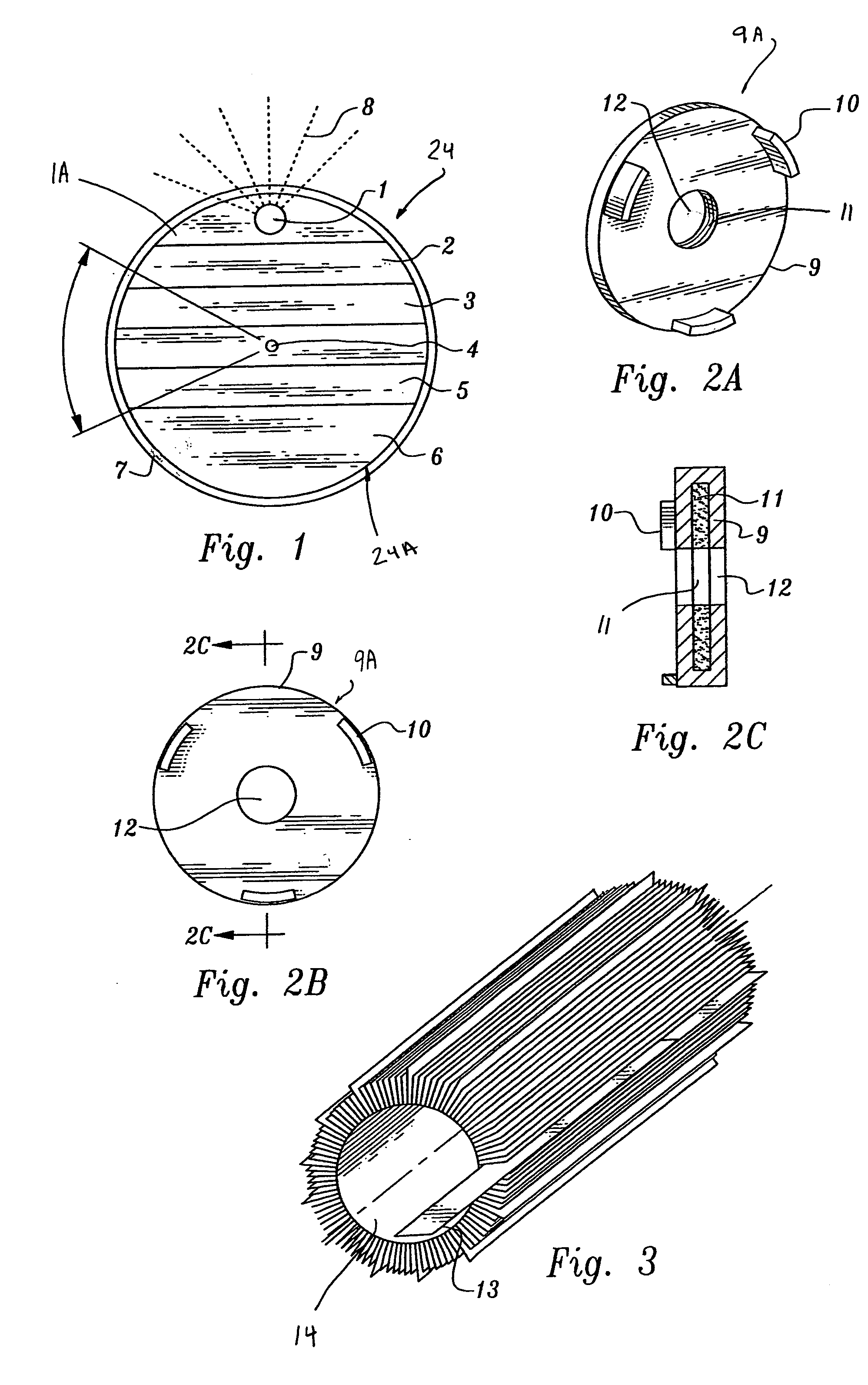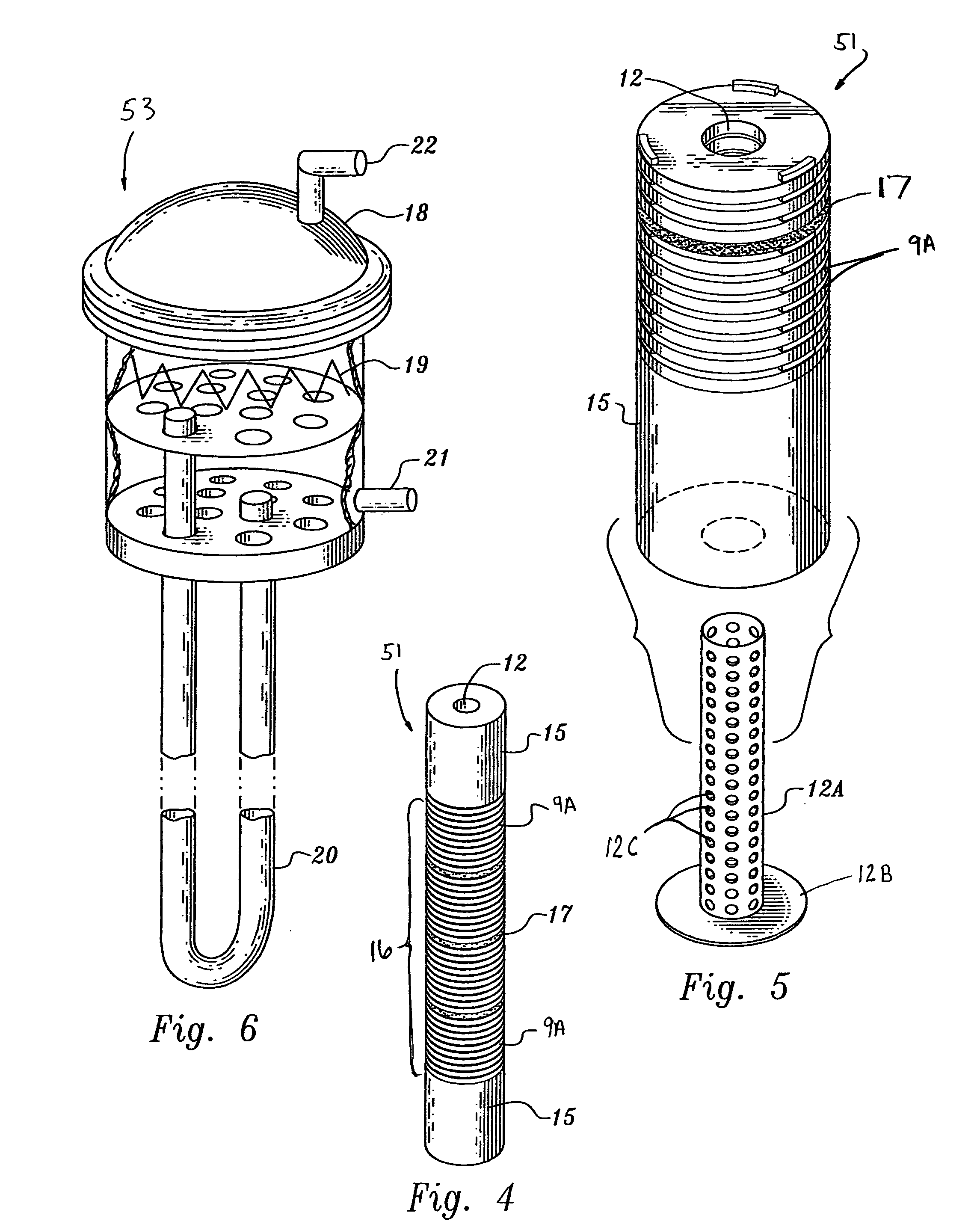[0012] DBI's report
Thorium to
Hydrogen (
Library of Congress Control Number 2003097825) shows the limitations of current sources of energy, including fossil fuels, solar cells, ocean energy, hydroelectric dams, and wind turbines. Although nuclear energy has not been promoted as an alternative due to the
human health and
environmental safety risks associated with current reactor designs, the reactor of the present invention drastically reduces—if not eliminates—many of the dangers associated with conventional nuclear reactors.
[0014] One of the most prominent aspects of the present invention is the fuel
system. The unique design of the present invention allows for a fuel burn-up rate of about 90%, reduces the amount of waste by about 90% from current reactor designs, and produces no weapons grade material. When compared to conventional uranium-based nuclear reactors, the thorium design concept of the present invention eliminates the current problems of high
waste production, negative environmental
impact, proliferation of nuclear weapons material, reactor
instability with possibility of meltdown,
system complexity, and high operating costs. The present invention may be used in any application which uses a heat source to generate steam for a
thermodynamic cycle (such as driving turbines) to generate
electricity, pump water, or extract
hydrogen.
[0015] With a single-phase
helium coolant, a
graphite moderator, and carbon reflectors, the present invention uses a multiple cavity fuel element, with fuel in the form of
thorium oxide and glass in pre-baked tablets containing 50% SiO2, 47% 232ThO2, 3% 233UO2 in some configurations. A 90%
burn rate is possible because the present invention allows the fuel to remain in the core until it is totally burned, something not possible in conventional reactors. In a shutdown mode, the fuel of the present invention is
solid vitrified matter, providing an impervious, tamper-proof container for the spent fuel. This design is fundamentally different from conventional reactor core designs in multiple ways. The reactor of the present invention is subcritical, meaning it does not rely on a critical reaction to achieve the necessary neutrons. An
external source of modulated neutrons makes possible the operation of the present
subcritical reactor invention by an external
neutron flux supply to bring the
system up to a k=0.98 status in a safe and controllable manner. The
neutron flux can be instantly stopped, controllably altered to new flux levels, or run at any
neutron flux level needed, until the reactor of the present invention through fuel breeding develops its own ability to
control power levels. The amount of breeding determines the neutron output flux level, and thereby the source can be slaved to the present invention's
power level to maintain the exact
power level desired, without fear of major core excursions.
[0017] The present invention can be designed in a variety of sizes,
ranging from as small as about 1 MW to more than about 100 MWs. This application contains one of multiple possible geometric designs in which the fuel can be switched from well to well. The attached figures represent a few specific embodiments for about a 100-MW plant. The
power output, incidentally, will determine the physical size of the plant. The design allows it to be installed only about 18 feet below grade, thus eliminating the need to rely upon geological proof of deep ground stability.
[0018] The reactor of the present invention uses thorium as the
energy source, which can then be used for the production of
hydrogen—as a bridge from oil to fusion—while simultaneously reducing the volume of fuel loading and unburned fuel content using a new geometry for nuclear reactors. It can produce energy to extract
hydrogen economically, with a significantly reduced amount of waste—all vitrified and containing only a minimal presence of useable 233U. The present invention provides maximum safety for startup, operation, and nuclear
waste disposal. It is also innovative in its promotion of safety in connection with fueling startup, operation, shutdown, refining, and
waste disposal. The configuration disclosed meets all the design performance requirements of simplicity, safety, reactor lifetime, reactor
power output control, and economy of low investment and operational cost.
 Login to View More
Login to View More  Login to View More
Login to View More 


